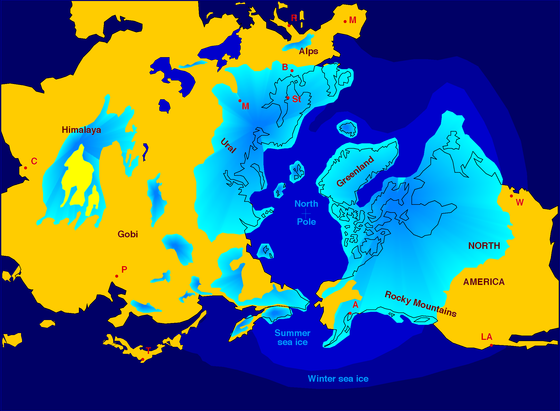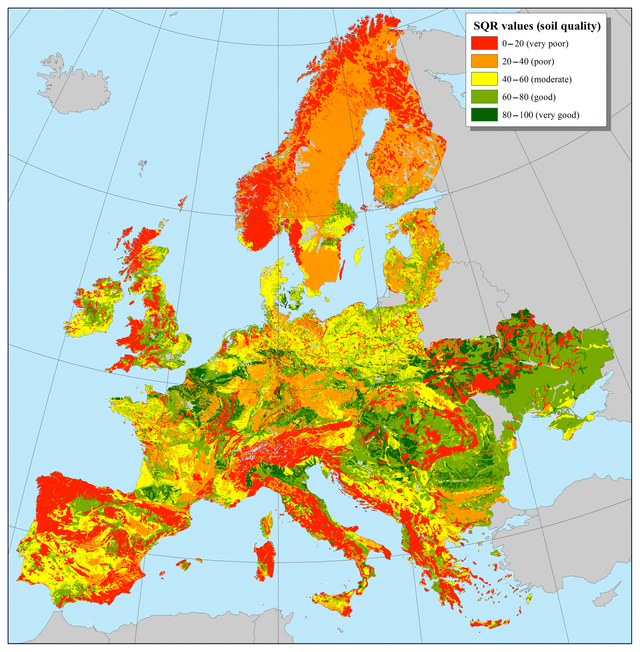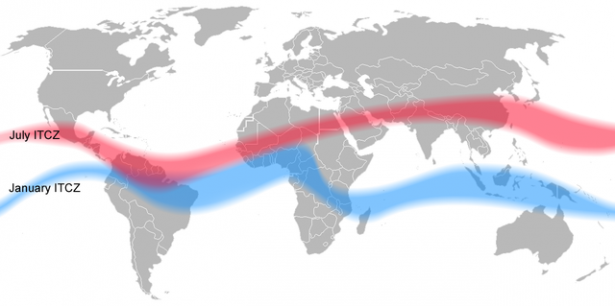this post was submitted on 06 Dec 2024
111 points (99.1% liked)
askchapo
23086 readers
128 users here now
Ask Hexbear is the place to ask and answer ~~thought-provoking~~ questions.
Rules:
-
Posts must ask a question.
-
If the question asked is serious, answer seriously.
-
Questions where you want to learn more about socialism are allowed, but questions in bad faith are not.
-
Try !feedback@hexbear.net if you're having questions about regarding moderation, site policy, the site itself, development, volunteering or the mod team.
founded 5 years ago
MODERATORS
you are viewing a single comment's thread
view the rest of the comments
view the rest of the comments

Why did the glaciers of the last ice age seem to affect the North American continent more than Asia? When I look at illustrations of the glaciation during the last ice age, it seems like they reach much farther south than in Asia.
I think I’ll try to limit this to two main reasons:
Location: Western Eurasia is located extremely far north compared to comparable climates in North America, but its climate is moderated by two main things that North America and Central Asia don’t have: the Mediterranean Sea to the southwest, and warm waters from the Gulf Stream to the west. This moderating effect on Europe's climate is what makes it relatively warm and wet today. This temperature impact falls off as you go further east and the climate becomes more continental, as we are well aware, but the incoming air masses from the west have already dropped most of their moisture by the time they reached areas in Eurasia that had otherwise adequate conditions to produce continental glaciation. Glaciation did occur in areas of Asia that were able to trap sufficient moisture at low enough temperatures. This segues nicely into
Topography: As I’ve stated previously, areas that can trap enough moisture to produce increased precipitation did produce continental glaciers. The question of why North America’s glaciers were so much larger can be answered by another phenomenon of geography and climate that we see in the modern day United States: Tornado Alley. The US sees so many tornadoes compared to the rest of the world because it has a perfect set of conditions in its interior. Cold, dry air from the arctic sweeps down over Canada unimpeded by any major mountain range and is funneled south between north America’s Rocky Mountains in the west and Appalachian Mountains in the east. Hot, moisture laden air from the Gulf of Mexico is able to sweep up the middle of North America also unimpeded by any major mountain ranges for the same reason. Lastly, huge storm systems moving in from the Pacific Ocean sweep across the west coast of North America and then crash into these air masses over the center of the country with vast amounts of energy and thus atmospheric instability, allowing the hot and humid tropical air from the south to burst through the cold and dry air from the north and rise rapidly to condense and create large storms with huge amounts of precipitation very deep into a continental landmass. These conditions still existed during the Last Glacial Maximum, and thus were able to bring large amounts of precipitation to the center of the North American Continent, which resulted in widespread continental glaciation. As for Eurasia, due to its many mountain ranges at the edges of the continent (except for the north, which we will talk about soon), no such place with sufficient moisture could sweep deep enough into the continent to produce widespread continental glaciation. Continental glaciation of Eurasia that did exist during the Last Glacial Maximum was located almost exclusively where just enough moisture from the Arctic Ocean and North Atlantic could penetrate into the continent. There is one small and notable exception to this, precisely where a smaller scale version of the conditions I described in North America existed. In modern day southwestern Russia and Ukraine, the perfect cocktail of unimpeded arctic air masses were able to sweep down over northwestern Russia, hot and moist air from the Black Sea was able to sweep inland also unimpeded, and storms from the North Atlantic (though significantly weakened by the time they moved so far inland) all collided and created adequate conditions to extend a lobe of continental glaciation nearly to the Black Sea coast around Crimea. This is unique in all of Eurasia, as the only other thus far unmentioned mass glaciation on the continent occurred in mountains that benefitted from their high elevation and lower temperates, as you can see below.
And as a fun and interesting side note, continental glaciation of Northern Europe and that lobe of glaciation that extended nearly to the Black Sea is exactly why the soil of Eastern Europe is so fertile. Rock underneath the weight of the glaciers was ground into a fine dust called loess, and it is then easily blown away. Most of Europe’s loess ended up spread largely across the Eurasian steppe, but the most fertile farmland in Europe that occurs in a large concentration is very specifically in southwest Russia and Ukraine, where loess helped facilitate rainfall in the already more humid air by acting as a condensation point for water vapor in the atmosphere, then falling as precipitation onto the plains surrounding the Black Sea. You can see that impact clearly on this map, and you can also almost perfectly trace along the edges of where glaciation occurred along the Baltic coast by the poorer soil quality, as soil was scoured away by glacial movement. The same process happened in North America, and it’s why the Great Plains and Midwest United States and Canadian Prairie Provinces have so much fertile farmland, while most of central Canada has very little arable land.
Wowww I had no idea about windblown loess providing nucleation sites for precipitation. That is extremely cool!
Because the world seemed so different in the past, it’s very easy to forget that the planet has almost always been subjected to the same processes we can observe in the modern day!
Think modern day examples– like windblown dust from the Sahara traveling with the winds of the intertropical convergence zone to end up as a primary nucleation point and fertilizer for the Central and South American Rainforests!
Youre very good at explaining things, comrade
I really appreciate hearing that! I love being thorough and believe that there is no concept in geology or geography or climate that can’t be understood by just about anybody if you don’t use inaccessible scientific language to explain it!
The way you've explained things definitely makes me agree! It reminds me of this cool professor I had years ago for zoology and botany